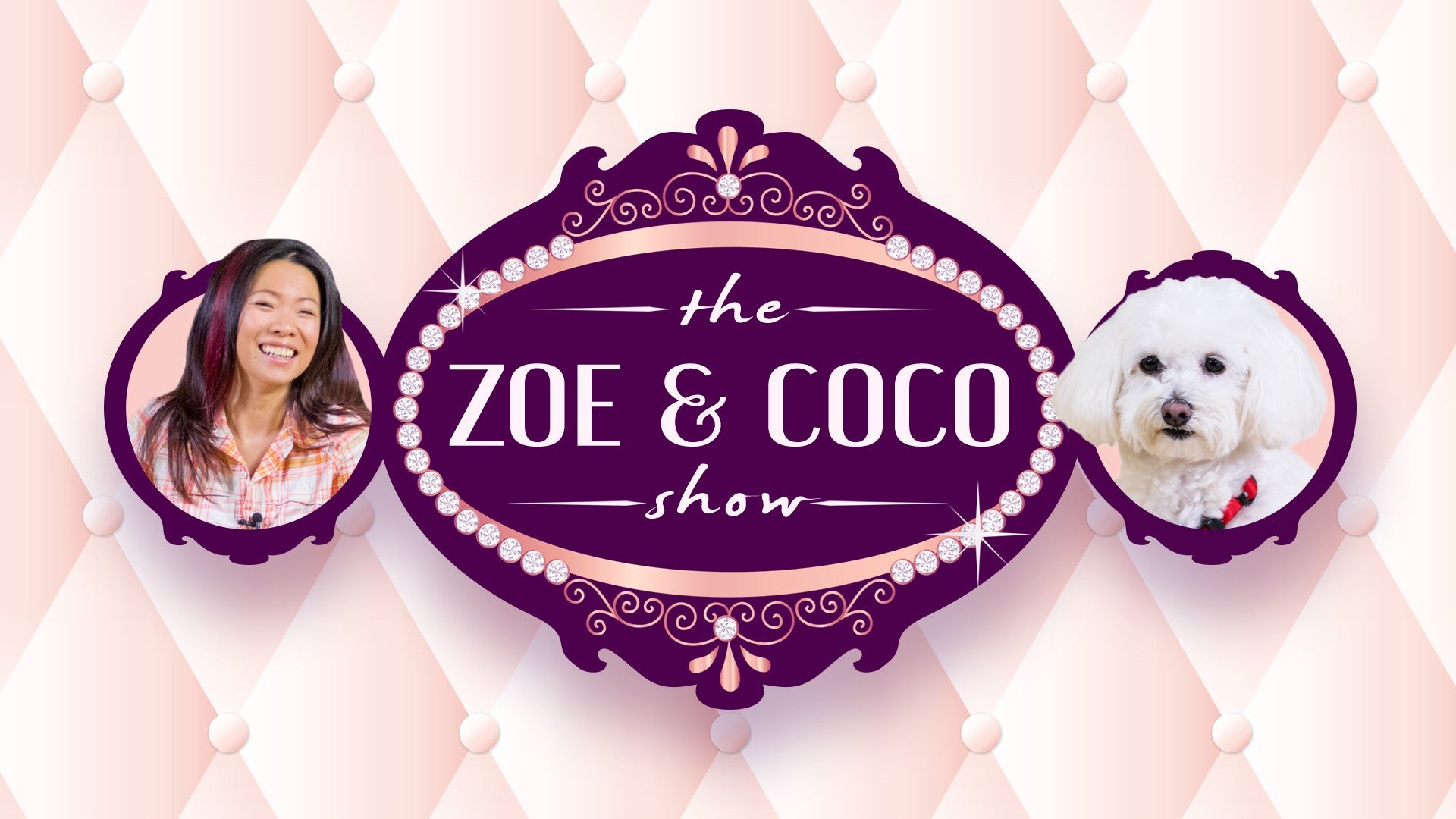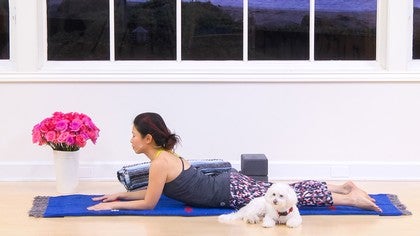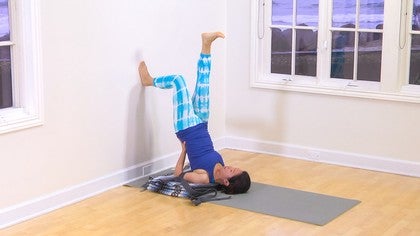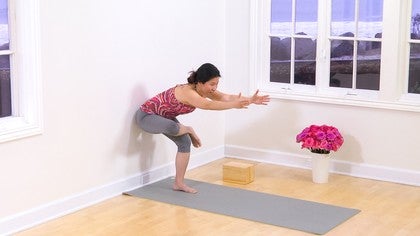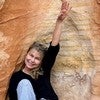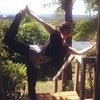Description
About This Video
Transcript
Read Full Transcript
Hi everybody, welcome to your practice. So today we're going to do a yin yoga practice. Yin yoga is where we do shapes that are similar to the yoga that we've been doing, except that we hold these poses a lot longer, and we're not trying to use too much muscular force. So when you're using muscular force, that's when you're doing yang yoga, so you're engaging and you're a bit more fiery. And yin is really the art of letting go.
So in the poses that we're going to be doing, we'll be targeting different energy channels through the body. We have different meridians and a lot of them come in pairs. So we're going to be targeting quite a bit of our liver gallbladder channel today, as well as our kidney urinary bladder channel. These channels are going to be really good for detoxifying the system, as well as for bringing more hydration and juice to your system. So we're just going to start. It's really nice to make your yin yoga territory super comfy.
So we've laid out a blanket on top of the mat today. If you have that at home, that'd be great. And for the first pose that we're going to do, we're going to grab a yoga bolster. We're going to put it towards the top of the mat. And we're going to just have the legs crossed simply.
So your right shin in front of your left shin. And then we might even want to bring the bolster up a little higher. So you can put a block under your bolster. I'm going to bring it right in. And we're going to grab a blanket.
So this is what I feel would be really comfortable for me if I was in this cross-legged position and going forward. You can experiment with going higher or lower. And we're just going to be about three minutes in this. So inhaling, you're just going to set yourself up for the best alignment possible. And exhaling, we're just going to go forward, resting your forehead onto the support.
Once you're in the position, you're going to completely let go. And you want to find your edge in yin yoga so that you feel slightly challenged, but not so much that your mind is noisy. So you don't want to feel so much strain and strut that secretly you're dying to get out of the pose because we're going to be here for quite a little while. So instead, you want to focus on your breathing. And just allowing that to be a bit of an anchor for you.
While the posture targets the meridians and the posture does the rest of the work for you. So resting your attention on your breath. You can use the mantra Soham. So breathing in, Soh, breathing out. And once you're in the posture, you try not to have too many movements or adjustments.
If you feel the need to adjust, you could even turn to the side of your head. And then again, just align your practice to be done fully with the eyes closed, except when you need to take a look at what the posture seems to look like. So to some people, yin yoga is a lazy practice because they feel like I'm not sweating. I'm not losing weight. Why would anybody want to do this?
And the amazing thing is one of the most difficult things to do is actually to be just okay where you are. And yin is just this really nice middle way where we can have a little bit of a purpose while also just practicing simply being here in the stillness and in the quiet. And you'll notice that your spine will just be rounded forward and yin we don't stress as much keeping the chest up. And we actually do want to target the meridians that are along your spine. Um, to come into and also to exit the yin poses, you want to do it very gently.
So now softly, we're just going to let the eyes open. You know, walk your hands back to it's yourself, gently coming on up. And then we're just going to take the legs apart. And again, set yourself up and get your legs to be wide open for a butterfly. So lifting through the heart.
And again, we're just going to come forward into dragonfly. So you'll notice that between the poses as I transitioned from one to the other, I was very slow and deliberate. So we want as much as we can to be like chi detectives. We want to start really tuning in to that gentle movement, that subtle movement within the body. And it's totally understandable.
The first few times you practice, or in the beginning, you might hear stuff like that. And you'll be like, what are they talking about? So don't worry about it. Just take it as information for now. And just allow yourself to notice what you notice. If at any point during the posture, you feel that something has yielded or changed, feel free to change the level of your props, maybe once.
So you can go on forward. Just make sure there's no strain of any kind that takes away your attention from tuning in to this gentle flow within you. So we just have about another two minutes here. Align your neck and your shoulders to let go. Align the legs to simply be heavy.
Align the very subtle expansion and contraction of the breath moving in and out of the body to be where you rest your attention. So when we deal with the liver meridian, when we do postures that target this, it's really detoxifying for your system. And emotionally, it also helps with frustration. So especially if you're having that time of the month, this might be a pose that feels slightly fiery when you're doing it, but you will feel better after doing it. The liver is also connected to the eyes, the organs, the eyes. So as you clarify the chi in this meridian, you're also going to notice that you get brighter eyes.
So just when you're on the cusp of noticing that your patience is running thin, that's when it gets really juicy and interesting. So if you're starting to notice that if you're new to yin yoga and that you're really wanting to get out of the pose, could you take a deep breath here and a deep exhalation and just try to stay for a few more breaths. Beautiful taking your time. You're just going to gently walk the hands back to it yourself. Again, keep your eyes closed. And then taking your hands behind you, just let the knees bend a little.
Maybe I should check on my sneezing dog. She's cool. And then we're just going to let the shoulders come up to the ears, let the head hang back and let the legs go. So just tuning in now to what we said we're going to become detectives in that subtle chi movement coursing through the inner legs where the living meridian is. Nice, and then from here, just tucking your chin, keeping the eyes soft, we're just going to bring the legs in. You're going to keep your bolster where it is and we're just going to turn around. We're going to come into a saddle pose, so you're going to have your big toes together and your knees are going to be apart. Open your knees to a comfortable width and then we're going to take the hands behind us, lift through your pelvis and then very gently resting the pelvis onto the bolster.
And so for you, this might be a comfortable height to have your bolster, or you could always put a couple more or even just have a chair behind you. So just to show you, I'm going to add also a blanket roll for my neck and we're going to come into that together for a few minutes. So taking your time, get that roll in so that it's right under your neck and have it supporting your neck and feel just that little bit of lengthening into the front of your thighs where your stomach and spleen channels are. And then making sure that you're comfortable, we're just going to open up the arms, have the palms facing up and again saddling in. So for some of you, you might have ankles that also feel like this pose is a little challenging. If that's the case, you can also just pad underneath the curve of your ankles or between your heels and your bottom. So just see what works for you. And the great thing about finding your setting for a yoga pose is once you're founded, in the future, it doesn't take a lot of time to go back to it. So the stomach spleen meridian is wonderful for anxiety. So just again, allowing our yin practice to be where that equanimity is just something that we're playing with. Again, just tune your attention in to your breath, to the expansion and contraction of the breath, moving in and out of the body.
Feel your face soften and feel your shoulders soften. And just feel yourself yield to the situation as it is. So we're just here for about another minute. Now, if you're new to yin and again, your mind is wondering, there's no problem. It's really natural for your mind to wonder and to want to create scenarios and self entertain.
But just because we're trying to strengthen our muscle of just paying attention to where we're at right now, if you could gently just invite your attention to rest again on your breath. Really nice. And then gently align the eyes to open. We're going to make it really easy to come out of this pose. So we're just going to bring the knees close to each other and just roll on to our side. And just resting onto your side. Take a moment. Bring your legs forward and then gently coming on up. Once again, just the legs, wherever they're comfortable, your hands, wherever they're comfortable. And then just allowing your spine to hammock back. Your chin can either be tucked or you can let the head go back. Whatever feels good for you right now. And again, we're just going to feel the energy moving through our bodies. Hi, Coco. Come here.
Really nice. And then from here, we're just going to bend the knees and we're going to come to the front of our mats again, and we're going to grab our bolster. And we're going to come into caterpillar. So you're going to have both of your legs straight in front of you. And if the hamstrings are tight, you might want to grab a block and sit a little higher. Or if you feel that a blanket would be more comfortable. You can also sit higher onto a blanket. So you're just, again, aiming for making life as easy as possible for yourself. So you're going to take your bolster and slowly allow yourself to come forward so that you can round and rest onto the bolster. You might really enjoy having a multi-tier situation. So you can put a block onto your legs too and then come onto the bolster. So again, find your yoga, experiment with what you need and just make it work for yourself. So coming into caterpillar, we're going to allow ourselves, now that we've set ourselves up, to just again completely let go. So you're going to allow your entire spine to just round and flow forward. As if that's the direction of a waterfall that wants to flow from the base of your spine all the way to the crown of your head. Letting go as much as you can in the legs, in the arms. You can see if you like placing your arms on top of the bolsters more, or just leaving them on the ground. And then once more, that easy task of drawing your attention back to rest lightly on your breath and on the subtle movements of unfolding through the body. So this pose is really great if you're feeling very tired, or if you're feeling as if your body is feeling a lot more internal heat than usual. This pose brings water, the element of water back into the system. And so it really helps to balance out your energy levels.
We're just going to be here for a couple more minutes. So sometimes when we're in a practice like this, you might notice thoughts and emotions rising. And sometimes they might be really joyous fun imaginations that you would really enjoy following the storyline of. And then sometimes maybe more difficult emotions or thoughts might come up. And in that case, we're going to experiment with this concept in yin yoga, in Chinese medicine, of noticing that all energies rise and fall, and all things occur and change. So noticing whatever emotion is arising, even if it's just boredom. And then allowing yourself to notice that too is happening, but that you're also still letting your attention lightly rest on your breath. And then as we look at that emotion that is arising, and as we stay with our breath, let's just be curious and see if any changes have occurred as we give time to this natural rising and falling that comes into play. And then just gently looking up, give yourself lots of time to just move back, bringing your props to the side. For this posture, we're just going to rest still just lying down. So just coming on to your back, totally letting go.
And our chi detective work this time along the backs of the legs, which is noticing if any sensations are occurring in there. Really nice. And then just softly opening the eyes. We're just going to come onto our bellies. And if you had a prop, we're just going to move the prop to the side. And coming on to our bellies for a sphinx, spreading the hands, have the shoulders right on top of the elbows. You can either do this pose with the chin still slightly lifted, or if it's more comfortable for you, just tuck your chin and let the head relax forward.
So we're just going to be in sphinx for a couple of minutes. In this pose, you're going to have a bit of the opposing element, the yang element. So you're going to be noticing that you are engaging your muscles a little through your arms. But see if you can allow yourself to choose to do as little as possible to simply remain in the pose. And again, let your eyes fall closed.
And then we're just going to allow some compression to happen. So sometimes in yin yoga, we lengthen something to let the chi flow better. And sometimes in yin yoga, we like to create a dam for the chi so that it really collects. And once it has collected to a certain volume, then we release out of it. And the chi that flows through is going to help us clear the blockages.
So right now we're in another pose that is really helpful for our kidneys. And when you're in a pose that is slightly more yang, again, just notice where the thoughts go. And see if you can let it play as if it was just the movies and you know that you're just watching this movie. And see if that distance gives you a little bit more of an ability to just hang out with it a little longer. Very nice. And then from here, we're just going to come forward, take your hands on top of each other and just rest your forehead onto the backs of your hands.
And again, just notice. From here, just gently looking forward. We're just going to push back into child's pose. So have your big toes together, your seat towards your heels. And for this child's pose, we want to stay a little longer.
So if you like, again, introduce the support that you feel would be awesome for your success. And then let's just roll on down into child's pose. Just allowing yourself once you have set up, again, to just let go over the support, to just receive the support. So this pose combines benefits for your kidney meridian and also your liver meridian. So we're just going to gently come out of this one.
And just set things off to the side. And then we're going to come onto our hands and knees and table pose. From there, you're just going to drop onto one elbow and extend the other arm. So you might find that you want to edge your forearm forward and then rest your forehead onto your forearm. And we're coming into quarter dog. So just lengthening the fingertips forward and drawing your right hip back. Again, once you have set up, we're going to let go. If you feel like this is quite challenging for today, you can always move back a little more and move closer or switch it down to a child's pose variation of the same pose. So it's your choice. And we're just going to stay in this, allowing now our heart and our small intestine meridian to also get the benefits of that flushing. So as a Chi detective, you probably notice that this pose is also a little bit more yang.
And again, let's soften. So as much as we can, we want to let ourselves really know that yoga, unlike what you see in most of the magazines and such, it's not about achieving something that looks really hard on the outside. We really want to dive in. It's really rich in here. So just noticing again, if that attention is like a puppy that likes to wander. And if it is, can you invite that attention to come on back? And then just gently drawing it all back, closing the knees, coming into a child's pose with the knees closed, resting the forehead down.
And just transitioning into this before we come to the other side. Notice that lengthening all the way from the crown of the head down to the very base of your spine. And that's where your kidney meridian is now gently being worked on. And then taking your time, swap the hands forward. Coming on forward, take the other forearm in, have it slightly ahead of your shoulders.
Lengthen your other arm forward, and then rest your forehead onto your arm. And then just for one last posture, last posture, just playing with, sitting with the breath. So our heart, small intestine meridians are actually the centers of capacity for joy and connection. And when we're able to have these channels just flow a little bit more naturally, you'll also feel just your heart opening up a little more. Beautiful. And then very gently, let's just bring it all back again to our closed-kneed child's pose.
And then taking your time, flowing the arms forward, slowly coming on up. We're just gonna come back to lying down onto the mat. Take your bolster and have it across the mat and have your knees supported by the bolster. If you like, you can take a blanket under the head, if that feels good for you. And then our work all done as chi detectives. Simply, again, remove anything that's an obstacle to complete relaxation.
And then just allow yourself to absorb the benefits of your practice. And then for those of you who can continue to stay in Shavasana, I encourage you to stay for a few more minutes. And for the rest of us, if you have a pet nearby, grab your pet and just bring them onto your belly and pet them. Just notice that deeply satisfying, rich feeling of being relaxed. And notice that we really don't need all the things that we're striving for and that we can simply have so much right now. So taking our time, we're gonna just roll on to the right hand side.
And then whenever you're ready, we're just gonna roll on up. Thank you so much for trying something new together and namaste.
The Zoe and Coco Show
Comments
You need to be a subscriber to post a comment.
Please Log In or Create an Account to start your free trial.
